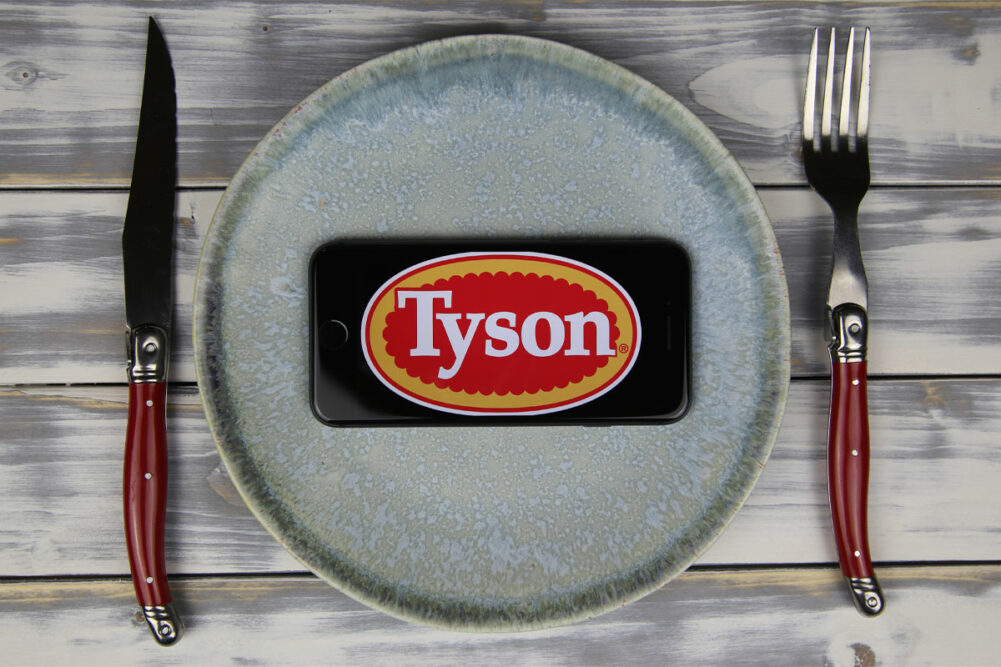SPIRINGDALE, ARK. – Tyson Foods, Inc.’s Prepared Foods business unit has been a pillar of strength for the company as its Beef, Poultry and Pork business units struggle to address supply/demand imbalances, input cost inflation and shifts in consumer demand. As management noted while discussing the company’s recent fiscal 2024 first-quarter results, Prepared Foods also is benefiting from the recovery of its foodservice business.
“Prepared Foods is performing to plan,” said Donnie D. King, president and chief executive officer, during a Feb. 5 conference call to discuss first-quarter results. “While we have seen softness in the retail channel, our brands have performed well. Core branch share remains near record levels, and we’re regaining share in our Foodservice business.”
For the quarter ended Dec. 30, 2023, the Prepared Foods unit had sales of $2.54 billion and flat when compared with the year prior. Volume of product sold rose 2.5%. Segment operating income fell to $243 million from $258 million the year before.
King noted that during the pandemic Tyson Foods lost a significant amount of foodservice business, because it could not support the category and the company had to give up some business. Hindering the recovery have been contracts former customers signed with competitors.
“… The nature of those contracts can be quite lengthy,” he said. “And we're starting to get back in when those open up and get some volume.”
An analyst on the call asked how recovery in foodservice may affect the company’s margin differential between branded, private label and foodservice, and King said the capacity being used already exists.
“So, if you think about it from that perspective, this overhead in these assets has been a drag on our business to some degree,” he said. “We’ve gotten new volume to put into those assets. So that's one piece of it.
“We're probably not going to talk about the differential in the margin structure between foodservice and retail, but it’s important that we regain that volume in foodservice.”
Melanie Boulden, group president of Prepared Foods and chief growth officer, said the company is focused on manipulating additional levels to improve the business unit’s bottom line.
“… What we plan on continuing to do is focus on our controllables; the things we can control, especially from an operational efficiency standpoint,” she said. “So, we're really focused on improving our service levels, we’re maximizing our asset utilization by driving down our overhead and increasing our yield and labor efficiencies. And, importantly, we’re driving automation to improve our supply chain execution.
“So, from a top-line perspective, yes, your question was about mix, but I just wanted to reiterate that we’re also working all levers of the P&L to ensure that we drive strong bottom line as well.”
For the first quarter, net income attributable to Tyson Foods was $107 million, or 31¢ per share on the common stock, down from $316 million, or 91¢ per share, reported in the first quarter of 2023.
Tyson Foods reported an adjusted operating income of $411 million, down 9% from a year ago, which was $453 million.
Sales for the quarter were $13.32 billion, up a little less than 1% from the $13.26 billion recorded in the prior year.
“Although we still have work to do, I am pleased with our first-quarter results and am confident we are on the right path to deliver long-term shareholder value,” King said. “Going forward, we will continue to prioritize our liquidity and financial health, our focus on operational excellence and our relentless pursuit to win with customers and consumers.”
Tyson Foods’ Beef business unit continued to reflect industrywide challenges in the market. Sales increased 6.3% to $5.02 billion, which compared with $4.72 billion in the first quarter of 2023. However, the unit recorded an operating income loss of $206 million during the 2024 first quarter compared with $166 million in operating income last year in the same period.
“In Beef, limited cattle supply led to spread compression as we expected,” King said. “Roughly half the loss in Q1 was related to an inventory valuation adjustment, which was primarily driven by highly volatile cattle futures.”
Tyson’s Chicken business had sales of $4.03 billion, down from $4.26 billion the year before. Segment volume declined 1.5%, while average price change declined 3.9% in the quarter.
The unit’s operating income rose to $177 million from $69 million the year before.
“In Chicken, the momentum established in the second half of fiscal '23 continued in Q1 with a third consecutive quarter of over $100 million in sequential adjusted operating income increase,” King said. “Operational improvements, including the bold actions we've taken, along with improvements in live operations, yield, labor efficiency and customer service, as well as improving market conditions were the primary drivers in Q1.”
The company’s Pork business showed a slight dip in sales for the quarter at $1.52 billion compared to last year’s sales of $1.53 billion. Volume in the pork sector increased 7.7%, while prices dipped 8.5%. Segment operating income was $39 million, an improvement when compared to the year prior when the segment recorded a loss of $21 million.





